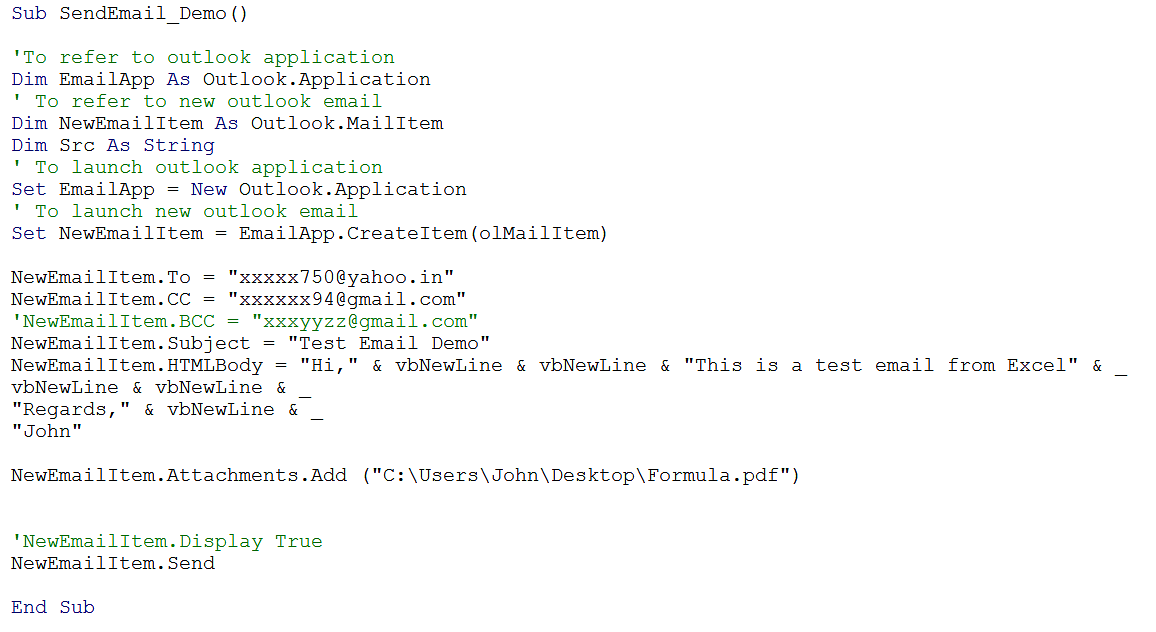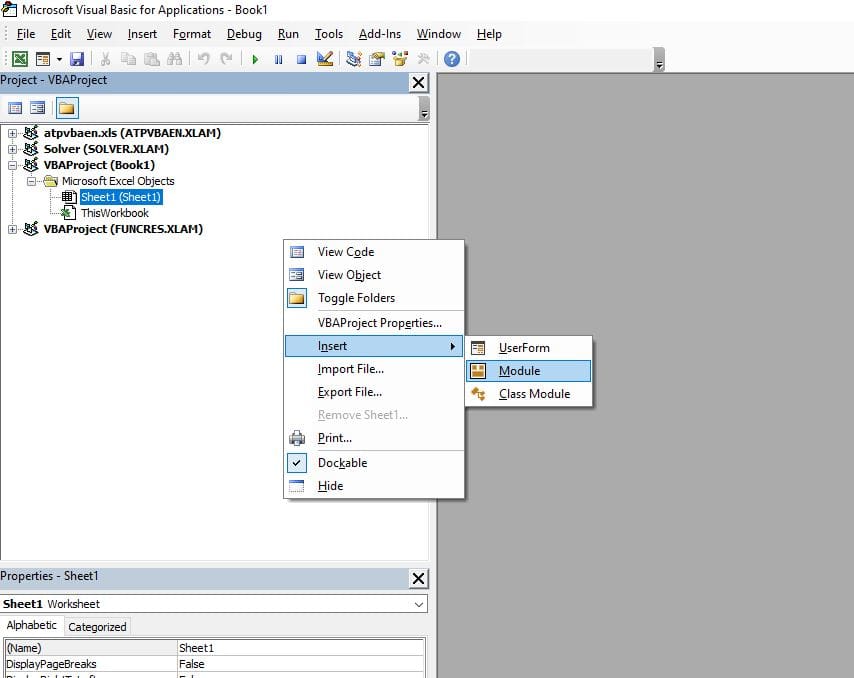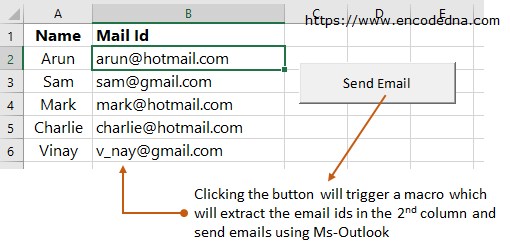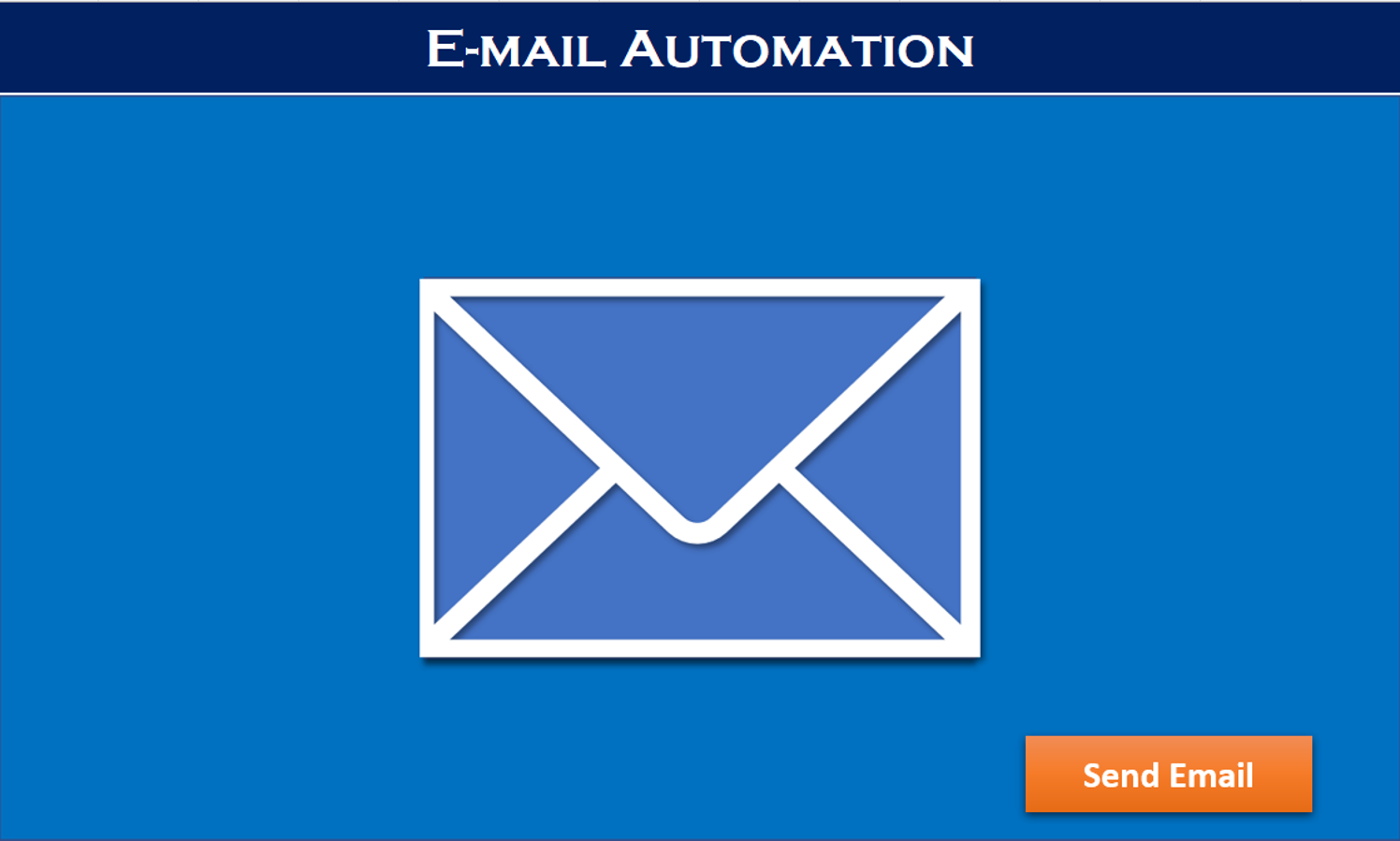
Using VBA to send emails can greatly enhance productivity and efficiency in various applications. Whether you're working with Excel, Word, or Outlook, VBA provides a powerful toolset to automate email-related tasks. Here, we'll explore five ways to send email using VBA, focusing on different aspects of email automation.
1. Sending Emails with Outlook Using VBA
One of the most straightforward methods to send emails using VBA is by leveraging Outlook's capabilities. This approach is especially useful when working within the Outlook application or when integrating with other Office applications.
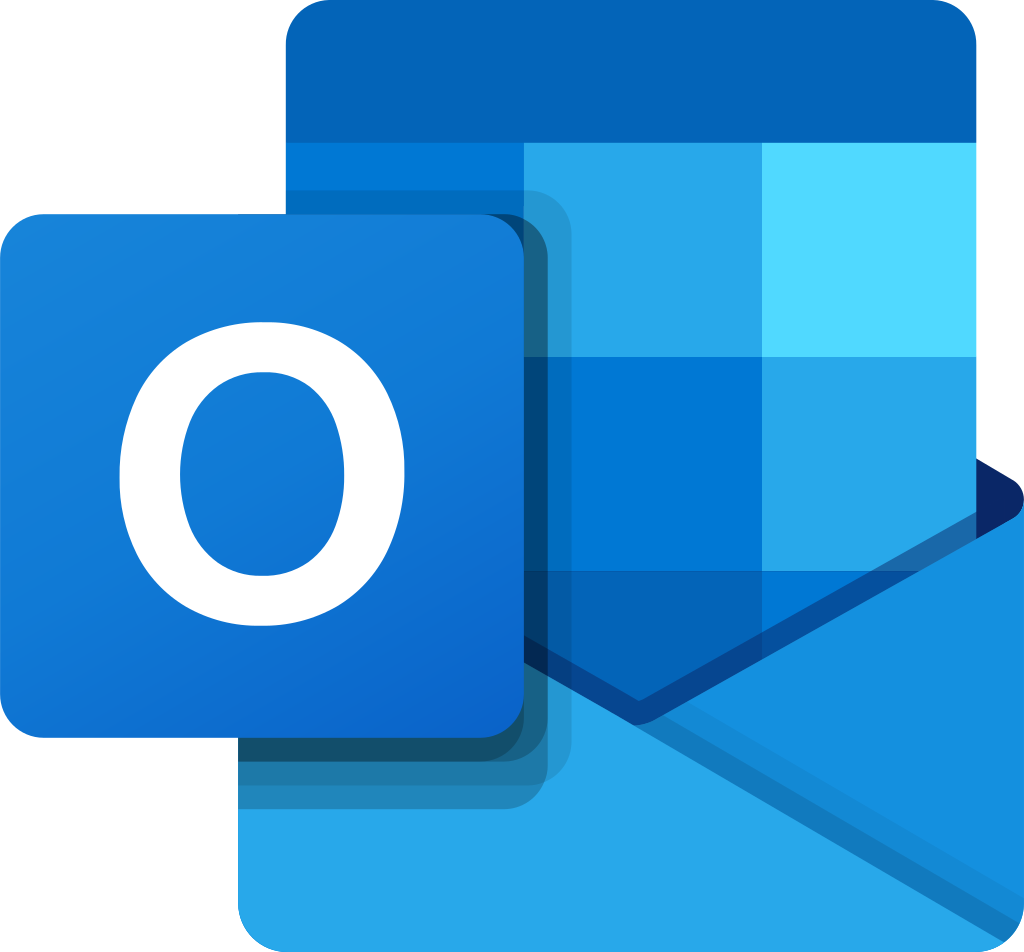
Example Code:
Sub SendEmailUsingOutlook()
Dim olApp As Object
Dim olMail As Object
' Create a new instance of Outlook
Set olApp = CreateObject("Outlook.Application")
' Create a new email
Set olMail = olApp.CreateItem(0)
' Set email properties
With olMail
.To = "recipient@example.com"
.Subject = "Test Email from VBA"
.Body = "This is a test email sent from VBA."
.Send
End With
' Clean up
Set olMail = Nothing
Set olApp = Nothing
End Sub
2. Sending Emails with CDO (Collaboration Data Objects)
CDO provides another way to send emails without requiring the Outlook application to be open. This method is useful for server-side applications or scenarios where Outlook is not installed.

Example Code:
Sub SendEmailUsingCDO()
Dim cdoMail As Object
Dim cdoConfig As Object
' Create a new CDO mail object
Set cdoMail = CreateObject("CDO.Message")
' Create a new CDO configuration object
Set cdoConfig = CreateObject("CDO.Configuration")
' Set configuration fields
With cdoConfig.Fields
.Item("http://schemas.microsoft.com/cdo/configuration/sendusing") = 2
.Item("http://schemas.microsoft.com/cdo/configuration/smtpserver") = "smtp.example.com"
.Item("http://schemas.microsoft.com/cdo/configuration/smtpauthenticate") = 1
.Item("http://schemas.microsoft.com/cdo/configuration/sendusername") = "your_username"
.Item("http://schemas.microsoft.com/cdo/configuration/sendpassword") = "your_password"
.Update
End With
' Set email properties
With cdoMail
Set.Configuration = cdoConfig
.To = "recipient@example.com"
.Subject = "Test Email from VBA using CDO"
.TextBody = "This is a test email sent from VBA using CDO."
.Send
End With
' Clean up
Set cdoMail = Nothing
Set cdoConfig = Nothing
End Sub
3. Sending Emails with Gmail Using VBA
For sending emails through Gmail, you can use the SchUseGmail utility or integrate with the Gmail API. However, for simplicity and without requiring API keys, you can use CDO and configure it to work with Gmail's SMTP server.

Example Code (Modified from CDO Example):
Sub SendEmailUsingGmail()
Dim cdoMail As Object
Dim cdoConfig As Object
' Create a new CDO mail object
Set cdoMail = CreateObject("CDO.Message")
' Create a new CDO configuration object
Set cdoConfig = CreateObject("CDO.Configuration")
' Set configuration fields for Gmail
With cdoConfig.Fields
.Item("http://schemas.microsoft.com/cdo/configuration/sendusing") = 2
.Item("http://schemas.microsoft.com/cdo/configuration/smtpserver") = "smtp.gmail.com"
.Item("http://schemas.microsoft.com/cdo/configuration/smtpport") = 465
.Item("http://schemas.microsoft.com/cdo/configuration/smtpauthenticate") = 1
.Item("http://schemas.microsoft.com/cdo/configuration/sendusername") = "your_gmail_username"
.Item("http://schemas.microsoft.com/cdo/configuration/sendpassword") = "your_gmail_password"
.Item("http://schemas.microsoft.com/cdo/configuration/smtpusessl") = True
.Update
End With
' Set email properties
With cdoMail
Set.Configuration = cdoConfig
.To = "recipient@example.com"
.Subject = "Test Email from VBA using Gmail"
.TextBody = "This is a test email sent from VBA using Gmail."
.Send
End With
' Clean up
Set cdoMail = Nothing
Set cdoConfig = Nothing
End Sub
4. Sending Emails with Outlook Using Late Binding
Late binding provides flexibility by not requiring early binding references to Outlook libraries. This approach is useful in scenarios where different versions of Outlook might be installed.
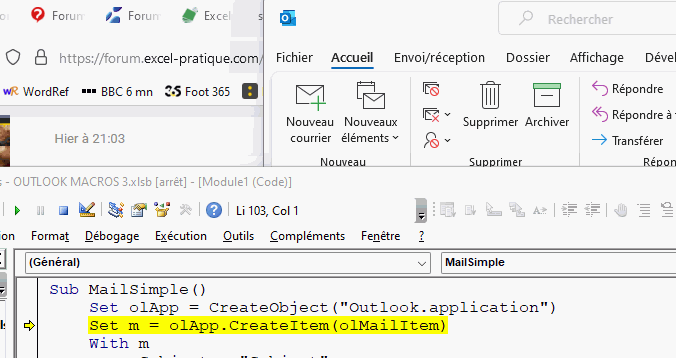
Example Code:
Sub SendEmailUsingOutlookLateBinding()
Dim olApp As Object
Dim olMail As Object
' Create a new instance of Outlook
Set olApp = CreateObject("Outlook.Application")
' Create a new email
Set olMail = olApp.CreateItem(0)
' Set email properties
With olMail
.To = "recipient@example.com"
.Subject = "Test Email from VBA using Late Binding"
.Body = "This is a test email sent from VBA using Late Binding."
.Send
End With
' Clean up
Set olMail = Nothing
Set olApp = Nothing
End Sub
5. Sending Emails with Mail Envelope Using VBA
Mail Envelope is a simple and less commonly used method for sending emails from VBA. It requires creating a new mail session and then using the SendMail method.
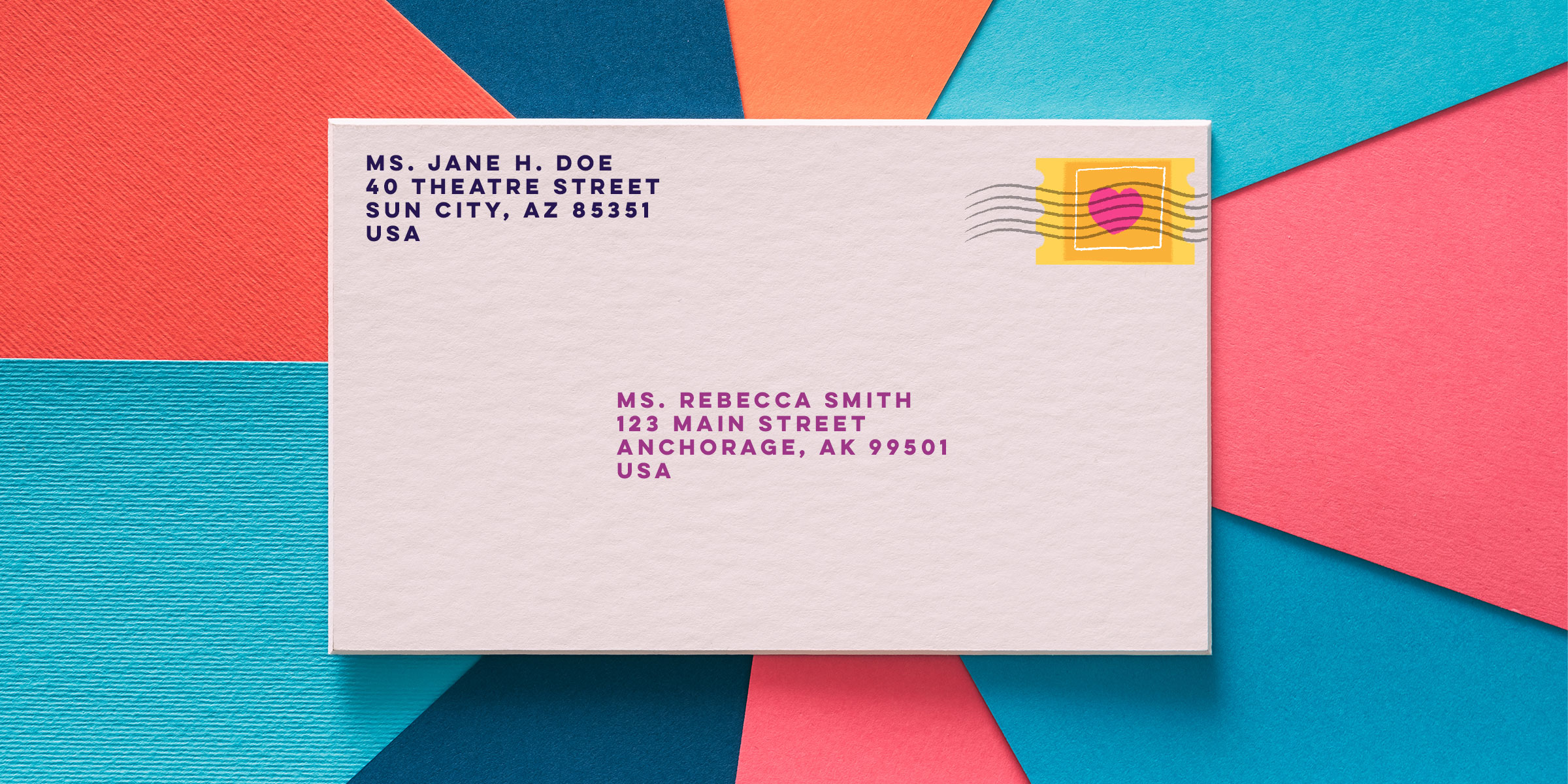
Example Code:
Sub SendEmailUsingMailEnvelope()
Dim ms As Object
Set ms = CreateObject("MailEnvelope")
' Set email properties
With ms
.To = "recipient@example.com"
.Subject = "Test Email from VBA using Mail Envelope"
.Body = "This is a test email sent from VBA using Mail Envelope."
.Send
End With
' Clean up
Set ms = Nothing
End Sub
Gallery of Email Sending Methods
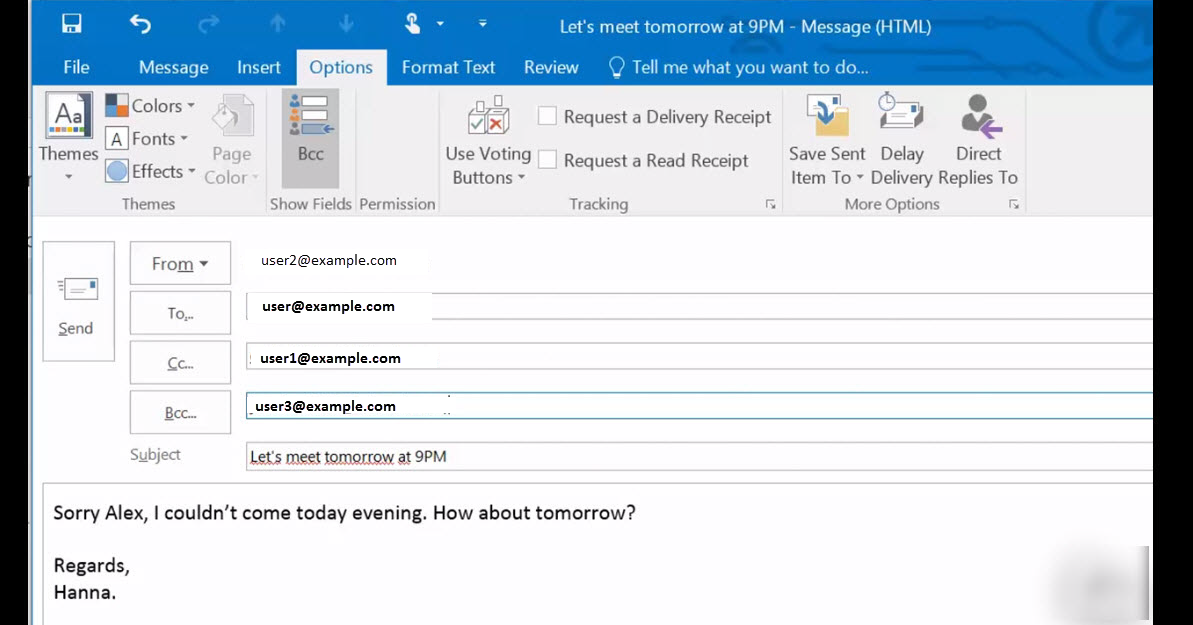
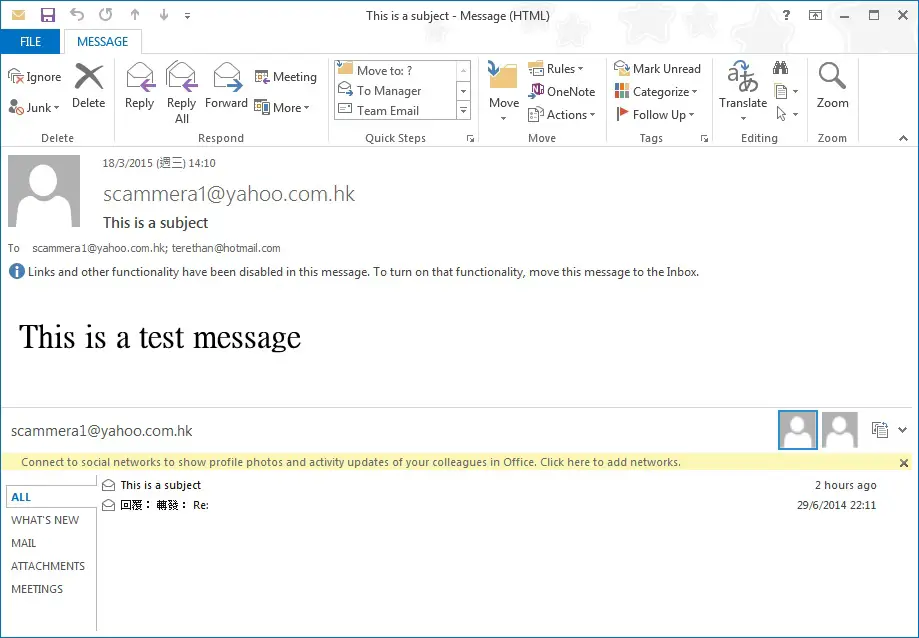
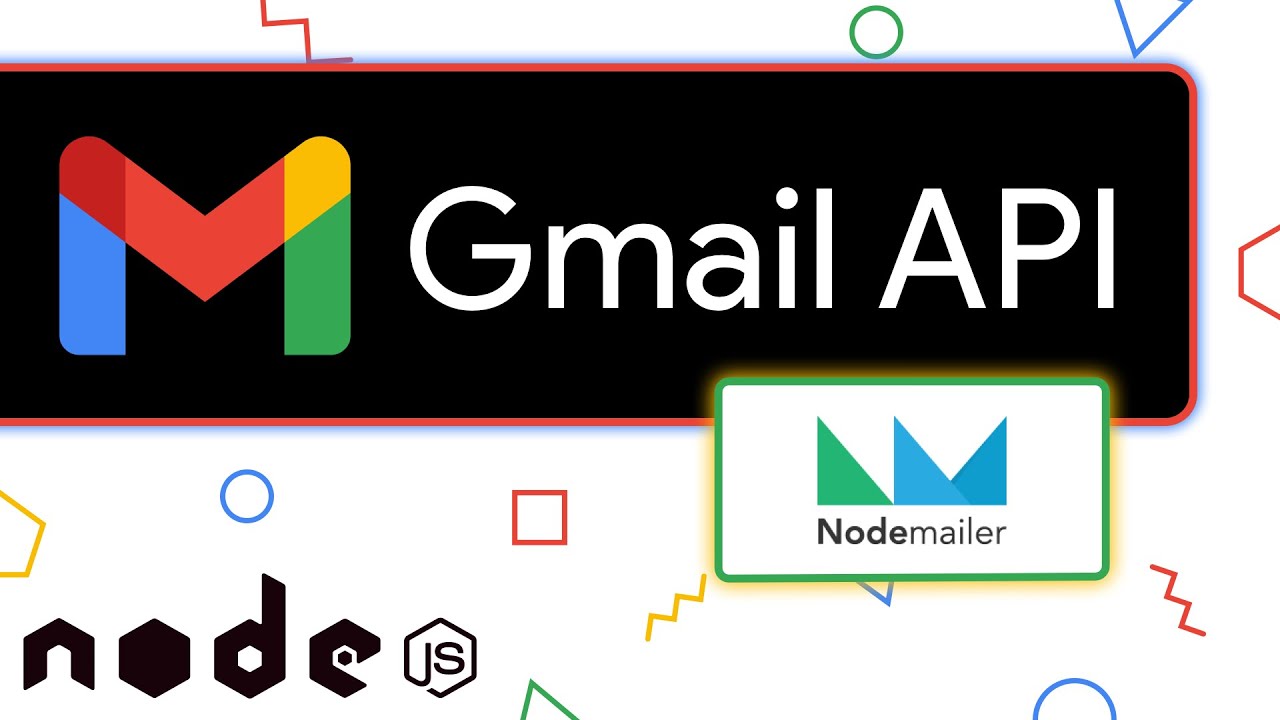
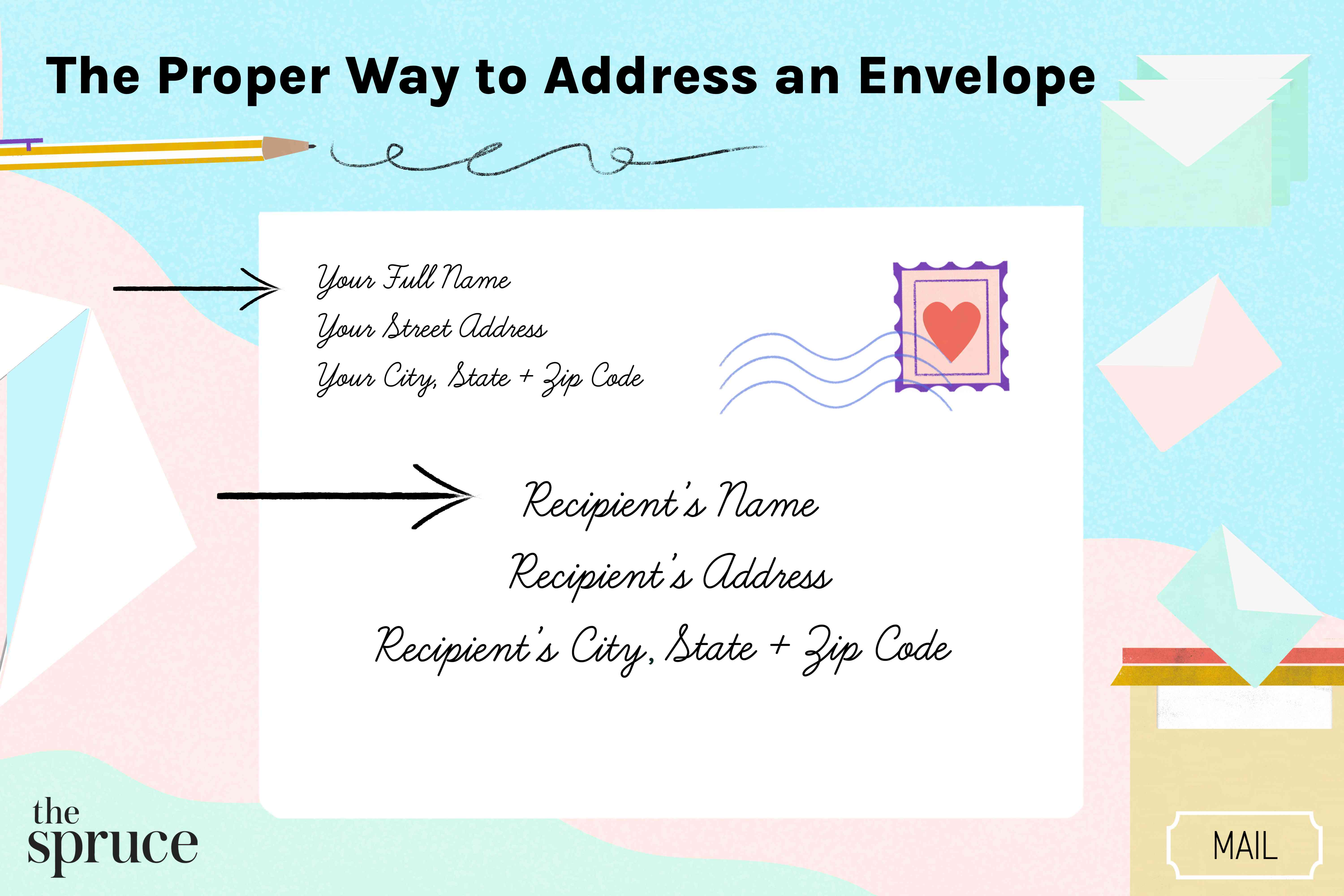
FAQs
Which method is best for sending emails using VBA?
+The choice of method depends on your specific needs and environment. Outlook integration is straightforward but requires Outlook to be installed. CDO provides more flexibility and can work with various SMTP servers.
Can I use these methods to send emails from a server?
+Yes, but you'll need to ensure that the server has the necessary configuration and permissions to send emails. CDO might be a better option for server-side applications.
How secure are these methods for sending sensitive information?
+Security depends on the method used. For example, using Gmail's SMTP server with SSL encryption can provide a secure way to send emails. Always consider the security implications when sending sensitive information via email.


